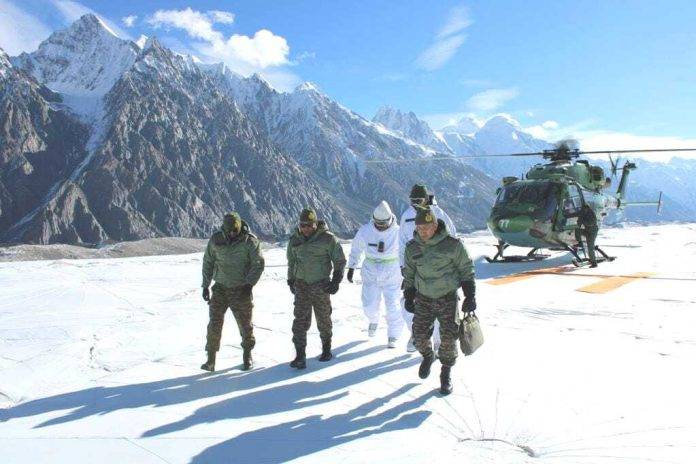Indian Army Chief General Manoj Pande reached Siachen, the World’s highest battlefield, and took stock of military preparations on wednesday. He spoke to the troops deployed there and reviewed the operational preparedness with senior officers.
The Indian Chief of Army Staff (CoAS) General Manoj Pandey laid a wreath at the Siachen War Memorial. He paid tribute to the brave soldiers who made the supreme sacrifice of their lives in the service of the country. Senior army officers were also with him on this occasion.
Siachen a glacier :
The 76 km long Siachen Glacier located in the eastern Karakoram range of the Himalayas is the place where the line of control between India and Pakistan ends. It is approximately 19 thousand feet high from the sea level and most of it comes under the administrative control of India’s Union Territory of Ladakh. Pakistan has also been claiming a part of it. There is a history of conflicts between the two armies regarding the possession of the land in this area.
Due to the frequent clashes between Indian and Pakistani soldiers, it came to be seen as the battlefield which is at the highest altitude in the World. Due to the extremely difficult conditions here, let alone living, it is not possible for a human being to do normal activities or even breathe. In summer the temperature falls to 30 degrees below zero. Despite this, India and Pakistan maintain a considerable presence of their troops in Siachen. Since the eighties, India has further increased its presence here.

Strategic importance:
India has freed it from Pakistan’s occupation and established its supremacy. Now India has established about 100 military posts on the ridge here, whereas the position of the Pakistani Army is very weak . The posts of Pakistani soldiers are approximately 3000 feet below the Indian posts.
Meaning of Siachen:
The naming of Siachen is very interesting. In the ‘Balti’ language spoken in this region, ‘Siya’ means Rose flower and ‘Chen’ means something that is available in abundance. Because Roses are found in abundance in this area, it was named Siachen.















